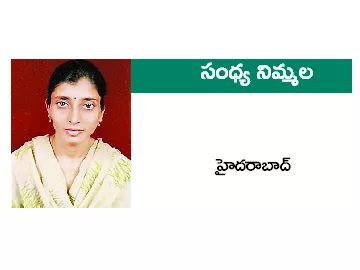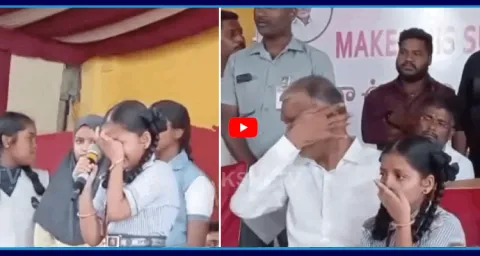
రీజనింగ్
Study the following arrangement of consonants, vowels, numbers and symbols carefully and answer the questions given below:
Alphabet & Alpha-Numeric Symbol Sequence
Questions on alphabet are based on the position of the letters of English Alphabet.
There are 26 letters in English Alphabet with 'A'-taking 1st position. 'B' - 2nd position and so on 'Z' takes the 26th position.
Similarly 'Z' takes the 1st position, 'Y'-2nd position and so on 'A' takes the 26th position. So the sum of the positions of any letter from the left end and from the right end is equal to 27.
A candidate is advised to remember positions of letters from the left end and if the position is to be found from right end subtract its position from left end from 27.
Practice Questions:
Directions (Q.1-5): Study the following arrangement of consonants, vowels, numbers and symbols carefully and answer the questions given below:
H @ F ! 3 U 6 % G I T P L 8 $ ^ 9 S 2 7 & A M K + J © D 4 # 5 & E
1. Which of the following is ninth to the right of the twentieth from the right end of the above arrangement?
1) K 2) M 3)U 4) A 5) None of these
A: 2
The element which is ninth to the right of the twentieth from the right end will be 20 – 9 = 11th from the right end. The element 11th from right end in the above arrangement is 'M'.
2. How many such consonants are there in the above arrangement, each of which is immediately preceded by a symbol and also immediately followed by a symbol?
1) None 2) One 3) Two
4) Three 5) More than three
A: 3
If a consonant (C) is immediately preceded by a symbol (S) and immediately followed by a symbol (S) then the sequence looks like SCS. Such occurrences in the above arrangements are:
@ F !, + J ©. i.e. there are two such occurrences.
3. If all the symbols are dropped from the arrangement, which of the following will be the twelfth from the left end?
1) 9 2) 2 3) S
4) 7 5) None of these
A: 1
If all the symbols are dropped from the above arrangement, then the symbols should not be counted while counting the twelfth position. So the first twelve elements are :
H F 3 U 6 G I T P L 8 9. The twelfth from left end in the resulting sequence is 9.
4. Four of the following five are alike in a certain way based on their positions in the above arrangement and so form a group. Which is the one that does not belong to the group?
1) L$8 2) AKM
3) @!F 4) 6%G
5) JD©
A: 4
In each of the groups L$8, AKM, @!F and JD© the second and third elements are second and first to the right of the first element respectively, but in 6%G the same sequence is not followed. Hence 6%G does not belong to the group.
5. What should come in place of the question mark (?) in the following series based on the above arrangement?
F3U % IT L $^ ?
1) 927 2) 7$A
3) 7AM 4) 2&A
5) 27&
A: 3
Take the first elements in each group: F, %, L. There are four elements between F and % and five elements between % and L. Therefore there should be six elements between L and next element. So the first element of next group is 7. In each of F3U, %IT, L$^ the second and third elements are second and third to the right of first element in the above sequence. The elements second and third to the right of 7 in
the above sequence are A and M. The group which should come in place of ? is 7AM.
Directions (6-10): Study the following arrangement carefully and answer the questions given below:
Y F Y W X V W Y W V F Y Z W X Y V Z X W Z V Y Z F Z X W Y X Z X
6. How many such pairs of alphabets are there in the series of alphabets given in bold in the above arrangement, each of which has as many letters between them (in both forward and backward direction) as they have between them in the English alphabetical series?
1) None 2) One 3) Two 4) Three 5) More than three
A: 5
Taking the backward direction i.e. counting from right to left, the pairs of letters satisfying the above condition are
Z W X Y V
ZX, ZV and XV
Taking the forward direction i.e. counting from left to right, the pairs of letters satisfying the above condition are
Z W X Y V
WX, WY and XY
Total there are six such pairs.
7. Which of the following is the eleventh to the left of twentieth from the left end of the above arrangement?
1) X 2) V 3) W 4) Y
5) Z
A: 3
The element eleventh to the left of the twentieth from left end will be 20 - 11 = 9th from the left end. The ninth element from the left end in the above arrangement is 'W'.
8. How many meaningful words can be formed with the alphabets which are first, second, fifth and sixth from the left end of the above arrangement?
1) None 2) One
3) Two 4) Three
5) More than three
A: 1
The first, second, fifth and sixth elements are Y, F, X and V. No word can be formed by using the above four letters.
9. How many such Ys are there in the above arrangement, each of which is immediately preceded by a consonant and also immediately followed by a consonant?
1) One 2) Two
3) Three 4) None
5) More than three
A: 5
If Y is preceded as well as followed by a consonant then it should not be preceded or followed by 'V'. Total there are six Y's (except the first one). Out of six Y's the fourth is followed by Y and fifth is preceded by V. So total there are 6–2=4Y's satisfying the above condition.
10. If all Z's are dropped from the above arrangement, which of the following will be seventh from the right end of the above arrangement?
1) V 2) X 3) W
4) F 5) None of these
A: 5
If all the Z's are dropped the arrangement from right end while …… Y F X W Y X X. The seventh from right end will be Y.
Directions (Q. 11-13): The following questions are based on the five three letter words given below:
FAN HOP GET CUB MID
Note: The words formed after performing the given operations may or may not be meaningful English words)
11. If the positions of the first and second letters of all the words are interchanged, how many words will form meaningful English words?
1) None 2) One
3) Two 4) Three
5) More than three
A: 1
If the first and second letters are interchanged, the words will be AFN, OHP, EGT, UCB and IMD. But none of them has a meaning. So no word satisfies the condition.
12. If all the letters in each of the words are arranged alphabetically (within the word), howmany words will remain unchanged?
1) Two 2) Three
3) One 4) None
5) More than three
A: 3
If the letters of the word are arranged alphabetically the order of letters will not change in the word 'HOP'. So one word remai-ns unchanged.
13. If the first letter of all the words is changed to the next letter of the English alphabetical series, how many words will have more than one vowel? (Same or different vowel)
1) None 2) Three 3) Two 4) More than three 5) One
A: 5
If the first letter of all words is changed to next letter of the English alphabetical series, then only H out of F, H, G, C and M will be changed to I. So only one word will have more than one vowel.
14. In the following series how ma-ny consonants come before 3?
3 A 3 F 4 T 7 U 3 S 3 T T 3 J J 3 4 5 3 D X 3 X Z 3 T 3 H
1) 7 2) 6 3) 5 4) 8
5) None of these
A: 2
The instances where consonants come before 3 are S3, T3, J3, X3, Z3 and T3. Therefore 6 consonants come before 3.
15. How many such pairs of letters are there in the word NEUTRAL, each of which has as many letters between them (in both forward and backward direction) as they have between them in the English alphabetical series?
1) Two 2) Three
3) None 4) One
5) More than three
A: 2
N E U T R A L
Total 3 pairs of letters satisfy the given condition.
16. Which of the following will come next in the following series?
a z a b y a b c x a b c d w a b c d
1) f 2) u 3) a 4) v 5) e
A: 5
First letter of the English alphabet is followed by the first letter from the right end, then first two letters of the English alphabet are followed by the second letter from the right end, first three letters of the English alphabet are followed by the third letter from the right end and so on. So the letter which continues the logic is 'e'.
17. Which of the following will come next in the following series?
0 9 0 1 9 0 1 2 9 0 1 2 3 9 0 1 2 3 4 9 0 1 2 3 4 5 9 0 1 2 3 4 5
1) 0 2) 6 3) 9 4) 7 5) 4
A: 2
First number of the whole number system is followed by 9, followed by first two numbers followed by 9 and so on. Therefore, the digit which continues the logic is 6














